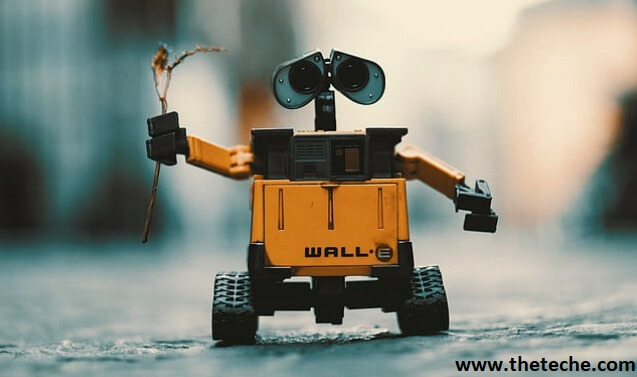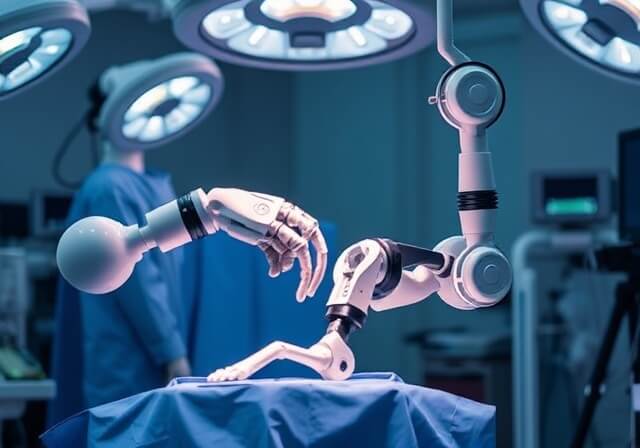Commercially available industrial robots can be classified into four categories according to their control system. The types of robot controls :
- Limited sequence robots
- Playback robots with point to point control
- Playback robots with continuous path control
- Intelligent robots
Of the four categories, the limited sequence robots represent the lowest level of control and intelligent robots are the most sophisticated.
Limited sequence robots do not use servo-control to indicate relative positions of the joints. Instead, they are controlled by setting limit switches and/or mechanical stops to establish the endpoints of travel for each of their joints.
Establishing the positions and sequence of these stops involves a mechanical set-up of the manipulator rather than robot programming in the usual sense of the term.
With this method of control, the individual joints can only be moved to their extreme limits of travel. This has the effect of severely limiting the number of distinct points that can be specified in a program for these robots.
The sequence in which the motion cycle is played out is defined by a pegboard or stepping switch or other sequencing device.
This device, which constitutes the robot controller, signals each of the particular actuators to operate in the proper succession. There is generally no feedback associated with a limited-sequence robot to indicate that the desired position has been achieved.
Any of the three drive systems can be used with this type of control system; however, pneumatic drive seems to be the type most commonly employed.
Applications for this type of robot generally involve simple motions, such as pick-and-place operations.
Playback robots use a more sophisticated control unit in which a series of positions or motions are “taught” to the robot, recorded into memory, and then repeated by the robot under its own control.
The term “playback” is descriptive of this general mode of operation. The procedure of teaching and recording into memory is referred to as programming the robot.
Playback robots usually have some form of servo-control (e.g., closed loop feedback system) to ensure are the positions that have been taught.
Playback robots can be classified into two categories: point-to-point (PTP) robots and continuous-path (CP) robots. Point-to-point robots are capable of performing motion cycles that consist of a series of desired point locations and related actions.
The robot is taught each point, and these points are recorded into the robot’s control unit. During playback, the robot is controlled to move from one point to another in the proper sequence.
Point-to-point robots do not control the path taken by the robot to get from one point to the next. If the programmer wants to exercise a limited amount of control over the path followed, this must sequence of positions is quite adequate for many kinds of applications, including loading and unloading machines and spot welding.
Continuous-path robots are capable of performing motion cycles in which the path followed by the robot is controlled. This is usually accomplished by making the robot move through a series of closely spaced points which describe the desired path.
The individual points are defined by the control unit rather than the programmer. Straight line motion is a common form of continuous-path control for industrial robots.
The programmer specifies the starting point and the end point of the path, and the control unit calculates the sequence of individual points that permit the robot to follow a straight line trajectory.
Some robots have the capability to follow a smooth, curved path that has been defined by a programmer who manually moves the arm through the desired motion cycle.
To achieve continuous-path control to more than a limited extent requires that the controller unit be capable of storing a large number of individual point locations that define the compound curved path.
Today this usually involves the use of a digital computer (a microprocessor is typically used as the central processing unit for the computer) as the robot controller.
CP control is required for certain types of industrial applications such as spray coating and arc welding.
Intelligent robots constitute a growing class of industrial robot that possesses the capability not only to play back a programmed motion cycle but also to interact with its environment in a way that seems intelligent.
Invariably, the controller unit consists of a digital computer or similar device (programmable controller). Intelligent robots can alter their programmed cycle in response to conditions that occur in the workplace.
They can make logical decisions based on sensor data received from the operation. The robots in this class have the capacity to communicate during the work cycle with humans or computer based systems.
Intelligent robots are usually programmed using an English-like symbolic language, unlike a computer programming language.
Indeed, the kinds of applications that are performed by intelligent robots rely on the use of a high-level language to accomplish the complex and sophisticated activities that can be accomplished by these robots.
Typical applications for intelligent robots are assembly tasks, space applications, under sea, nuclear applications, defense applications, etc.
Intelligent robots have been made possible by the availability of cheap electronics, smaller and faster processors and smart materials-based actuators and sensors.
| Read More Topics |
| Robot application |
| Configuration of robot controller |
| Robot drive system |
| Common robot configuration |






